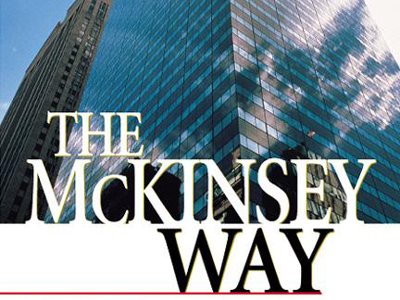Classic Strategy Tool | McKinsey’s Three Horizons of Growth
In an era where disruptive innovation seems to be have taken hold of the business world as well as the public consciousness, it may be high time to review one of the classic McKinsey frameworks for thinking about innovation within a mature business.
Like all the best McKinsey & Co frameworks, the Three Horizons of Growth approach is a way of structuring and giving coherence to your thoughts. In this case the Three Horizons allows you to apply a dynamic vision of the process of change across your whole business portfolio. If you’d like to listen to a brief three minute introduction from to the Three Horizons approach from McKinsey themselves, you can do that here. In short, the Three Horizons framework is a way of visualizing and conceptualizing your organization’s innovation within three waves. You can also imagine it like three growth rings on a tree.
The Three Horizons approach first crystallized in the work of Baghai, Coley and White in the late 90s and has been a valuable tool ever since.
First Horizon
The First Horizon is about your existing business. It’s about your core business at this moment in time. These business may have peaked, plateaued or have eaten up most of their marginal gains. The main task for the leader is to consider how to extract the remaining value of this part of the portfolio; to conserve their share of the market. It’s important to consider the potential weaknesses of your existing core businesses in the face of external change.
Second Horizon
The Second Horizon comprises the green shoots, the emerging players within the organization’s portfolio. The job of the leader when considering the second horizon is to attempt to pick the most likely future successes within their portfolio. And then the leader must think how to support these new businesses through the acquisition of new capabilities and potentially new business systems.
Third Horizon
When thinking about Horizon Three the key is to consider the how to create optionality for your portfolio. The further out you push the time horizon, the greater the level of uncertainty about the future. Like a good hedge fund manager who manages their portfolio so that any potential downside is outweighed by potential upside. The secret to this is structuring your portfolio to take advantage of optionality. Treat Horizon Three like a series of small bets through which you may stand to benefit proportionately through future changes in external circumstances.
With the Three Horizons approach you can create a cohesion of your present and future business plans and portfolios. With this framework you are less likely to be caught out by disruptive change and in a better position to capitalize on an uncertain future.
If you’d like to see more articles like this, please let us know through Twitter.








Leave a Reply
Want to join the discussion?Feel free to contribute!